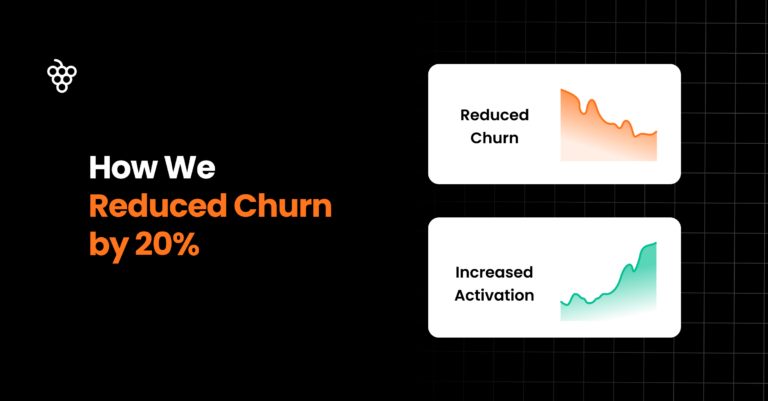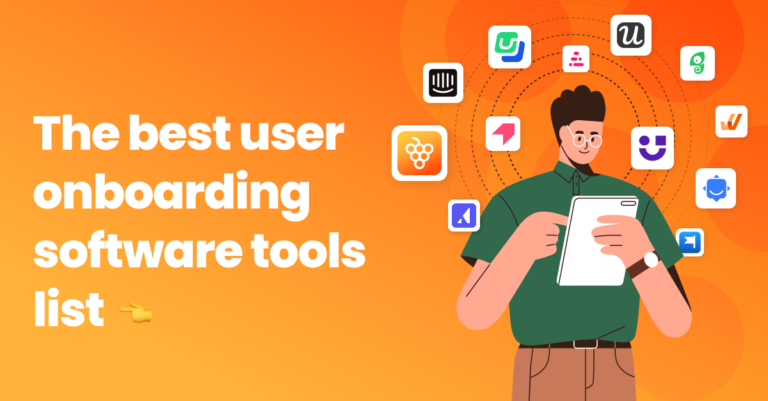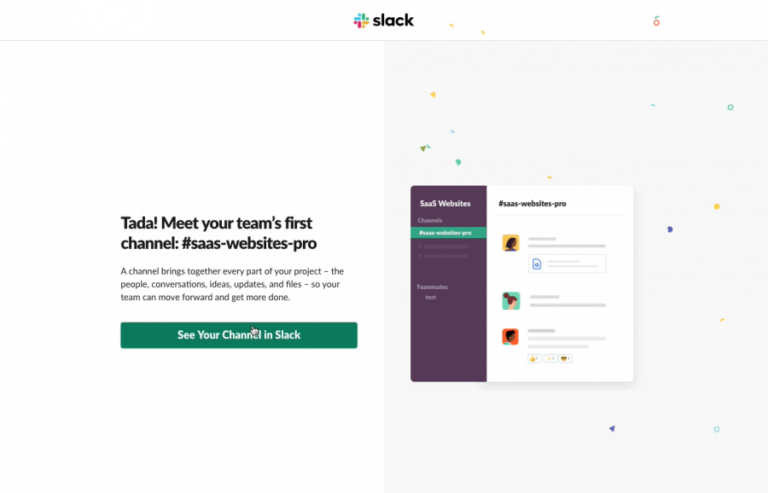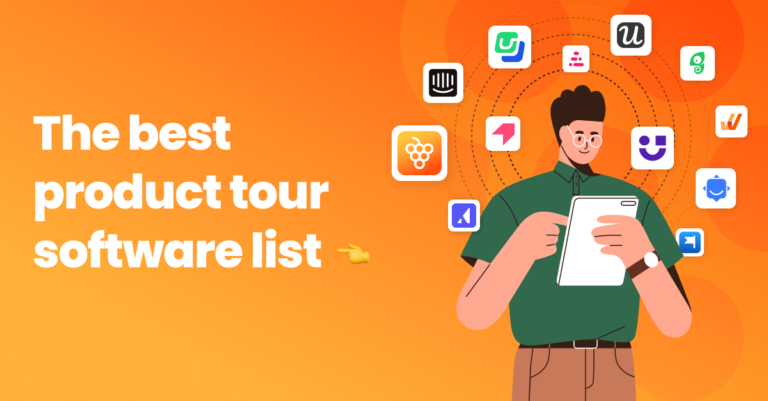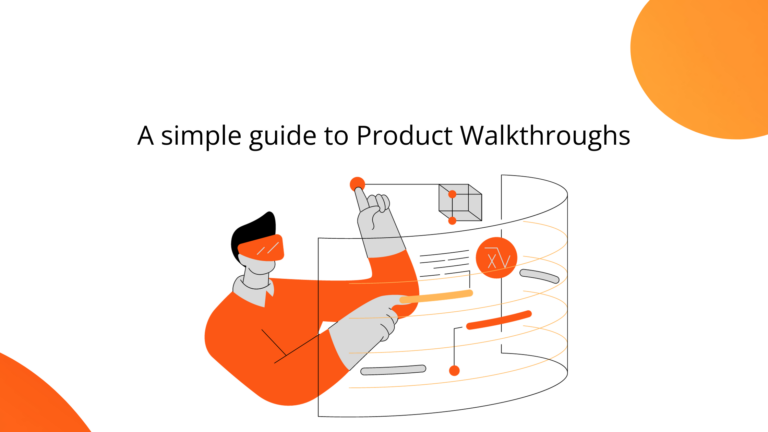Have you ever had a light bulb moment? WHen something automatically clicks and you get a moment of clarity. That’s an “aha” moment.
The aha moment is a critical aspect of your app’s success. It refers to the moment when a user realizes the value of your app’s features and how they can solve their problems.
Understanding your aha moment will effect the process of onboarding and what features to introduce to users. And as a result, it has a huge effect on how your values perceive your app.
Keep reading to learn how you can identify your platforms “aha” moment.

.
What is User Onboarding?
A well-designed onboarding experience creates a positive first impression and increases the likelihood of new users becoming loyal customers. In fact, studies show that effective user onboarding can increase user retention rates by as much as 50%.
User onboarding refers to the process of welcoming new users to a product, application, or service. It involves a series of steps and tutorials designed to help them understand how the product works, learn how to use it, and make the most out of it. A successful user onboarding process should be engaging, informative, and helpful in ensuring the user can navigate through the application well enough to achieve their desired goals.
One of the essential aspects of user onboarding is to make it as simple and straightforward as possible. Users do not want to spend hours trying to figure out how to use a product. They want to get started as quickly as possible. Therefore, the onboarding process should be designed in a way that allows users to get started with the product in just a few steps.
Why User Onboarding Matters
The entire success and longevity of a product significantly depends on the user experience of the first few days of using the app.
A positive experience enhances user satisfaction, engagement, and increases the chances of getting feedback of the product as well. On the other hand, an unsatisfactory experience can lead to users dropping off quickly, leaving them unimpressed with the product, culminating in high churn rates.
A user onboarding process that is well-designed helps users feel confident and supported by the app, by enabling them to discover all the features and functionalities of the app.
When it comes to creating a user onboarding process, it is crucial to keep in mind that it is not just about showing users how to use the product. It is also about creating a connection between the user and the product. This connection can be established by making the user feel like they are part of a community, which can be achieved by providing them with relevant information, tips, and tricks. By doing so, the user feels like they are not alone in their journey of using the product, which can lead to increased engagement and user retention.
Another reason why user onboarding matters is that it can help reduce customer support costs. If users have a clear understanding of how to use the product, they are less likely to contact customer support for help. This, in turn, can help reduce the workload of customer support teams, allowing them to focus on more critical issues.
The Impact of Effective Onboarding on User Retention
When deciding how much value a product has, users do not primarily consider the features it offers. Instead, users evaluate the effectiveness of a product based on their personal experience with it. Effective user onboarding significantly contributes to user satisfaction, loyalty, and retention. Research shows that customers are more loyal to products that offer a positive first experience. Those initial moments, onboarding, will lead customers to either stick with your solution or abandon it quickly. By evaluating the design, the user actively chooses to engage and stay or leave and forget about the solution.
Moreover, a well-designed user onboarding process can help reduce churn rates. When users have a positive experience with the product during the onboarding process, they are more likely to continue using it. On the other hand, if the onboarding process is difficult, confusing, or unsatisfactory, users are more likely to abandon the product.
In conclusion, user onboarding is a critical aspect of product design, and it should not be overlooked. By creating a well-designed onboarding process, you can help users understand your product, increase engagement, and reduce churn rates.
Identifying Your Aha Moment
The aha moment is a critical aspect of your app’s success. It refers to the moment when a user realizes the value of your app’s features and how they can solve their problems. It is the moment when they become fully engaged and satisfied with your product. To create an effective user onboarding experience, you need to identify your product’s aha moment and emphasize it throughout the onboarding process. An aha moment may vary from one product to the other. For instance, a social media platform’s aha moment could come from discovering an old friend or from connecting with new ones.
But how do you identify your product’s aha moment? It all starts with understanding what problems your solution aims to solve for the user. You need to gather information on how your users are using the product. In what situations do they use the app most? What is the primary goal of the user when using the application? By understanding these details, you can design the onboarding experience to emphasize the solution it offers.
What is an Aha Moment?
An aha moment is the moment when a user realizes the value of your app’s features and how they can solve their problems. It is the moment when they become fully engaged and satisfied with your product. This moment is critical because it can determine whether a user becomes a loyal customer or churns.
How to Discover Your Product’s Aha Moment
Discovering your product’s aha moment requires a deep understanding of your users and their needs. You need to gather data on how they use your product and what problems they are trying to solve. This information can be obtained through surveys, user interviews, and analytics tools. By analyzing this data, you can identify patterns and trends that will help you understand what drives user engagement and satisfaction.
Once you have identified your product’s aha moment, you need to emphasize it throughout the onboarding process. This can be done through clear and concise messaging, interactive tutorials, and personalized recommendations that highlight the value of your app’s features.
Examples of Aha Moments in Popular Products
Let’s take a look at some examples of aha moments in popular products:
- The e-commerce giant Amazon helps users discover products based on their previous purchasing history on the platform. By analyzing user data, Amazon can recommend products that are relevant to their interests and needs. This personalized approach to shopping is a key aha moment for many Amazon users.
- The ride-hailing app Uber entices users by providing seamless transport services within the city. Users can book a ride with just a few taps on their smartphone, and the app provides real-time updates on the driver’s location and estimated time of arrival. This convenience and ease of use are a key aha moment for many Uber users.
- The language learning app Duolingo uses an interactive format that makes learning feel like playing an exciting game. Users can earn points and unlock rewards as they progress through the lessons, which keeps them engaged and motivated. This gamification of language learning is a key aha moment for many Duolingo users.
By emphasizing these aha moments throughout the onboarding process, these companies have been able to create a compelling user experience that keeps users engaged and satisfied.
Designing a User Onboarding Flow
Designing a user onboarding flow is a crucial step in ensuring that your product is easy to use and understand. It involves understanding the user’s journey and implementing a series of tutorials that guide them through the product. A well-designed onboarding flow can lead to higher user engagement, increased retention rates, and ultimately, more revenue for your business.
Setting Onboarding Goals
The first step in designing an effective onboarding flow is to set clear goals. What do you want to achieve with the flow? Do you want the user to complete their profile, make the first purchase, or invite a friend to download the app? Defining these objectives will provide you with a roadmap for designing the ideal onboarding experience for your users.
For example, if your goal is to increase user engagement, you may want to focus on highlighting the key features of your product and demonstrating how they can be used to solve the user’s problems. On the other hand, if your goal is to increase revenue, you may want to focus on encouraging users to make their first purchase by showcasing the benefits of your product.
Choosing the Right Onboarding Method
Once you have defined your onboarding goals, the next step is to choose the right onboarding method to accomplish them. Different onboarding methods can be implemented, such as instructional overlays, tutorials, videos, or tooltips. The key is to choose the method that best fits your product and your users’ needs.
For example, if your product has a complex user interface, you may want to use instructional overlays to guide users through the different features and functionalities. On the other hand, if your product is more straightforward, you may want to use tooltips to provide users with quick tips and tricks.
Creating a Seamless Onboarding Experience
A seamless onboarding experience is critical to the success of your product. It should be quick and help users understand how to use the app or product effectively. The flow should reduce confusion and prevent unnecessary obstacles that could cause user disengagement. One way to achieve a seamless onboarding experience is by allowing the user to skip tutorial segments they may not need. Another way is by providing different versions of onboarding screens based on users’ interests.
It’s also essential to keep in mind that the onboarding process should be an ongoing process. You should continue to gather feedback from your users and make adjustments to the onboarding flow as needed to ensure that it remains effective and relevant over time.
In conclusion, designing an effective onboarding flow is crucial to the success of your product. By setting clear goals, choosing the right onboarding method, and creating a seamless onboarding experience, you can increase user engagement, retention rates, and ultimately, revenue for your business.
Tips for Creating Engaging Onboarding Content
Using Visuals to Enhance Understanding
Visuals can enhance the onboarding experience, making it more engaging and easier for users to understand. It is easier to remember images than words because most people have an easier time picking up visual information. Videos, illustrations, infographics, and animations are ideal for illustrating how tasks or features work within the app.
Keeping Content Simple and Concise
The content should be simple, direct, and easy to comprehend. The user’s attention span is short. Therefore it’s essential to provide clear, concise, and engaging onboarding content that highlights the critical features of the product. Break down the content into smaller pieces that are easy to digest.
Personalizing the Onboarding Experience
Users will feel genuinely valued when you personalize the onboarding experience to their needs. Personalization could come in the form of bespoke communication and tailored product experiences. For instance, the welcome message could include the user’s name. Making the user feel special helps build trust, loyalty and adds to the user’s comfort of using your app.
User onboarding is a critical aspect of user experience.
Implementing an effective onboarding strategy not only helps boost user retention rates but also aids in forming and maintaining customer relationships. Onboarding is a continuous process for user experience, and it calls for continuous iteration over time. Therefore, the design must be constantly evaluated and optimized. For a successful onboarding process, constant feedback from user experience also comes in handy.

